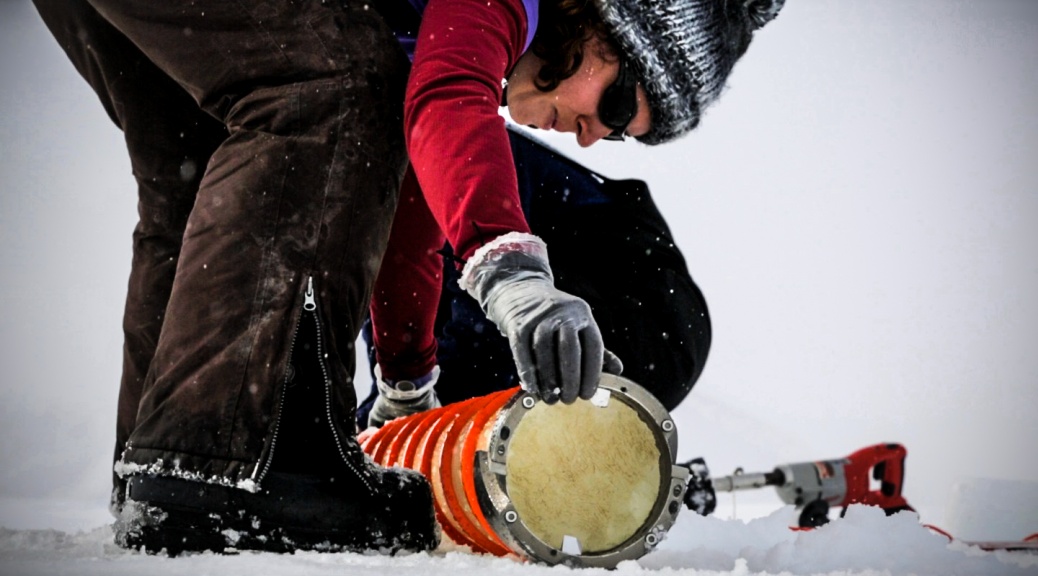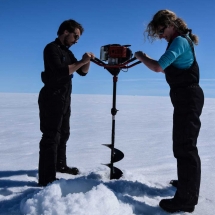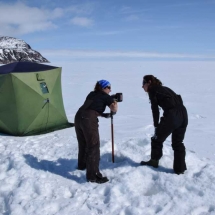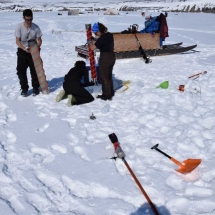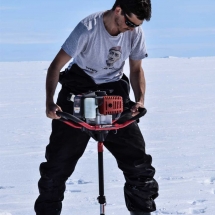During the formation of sea ice, small spaces remain between the ice crystals and are filled with a salty liquid, known as brines.
These brines are trapped in pockets or channels in sea ice (Figure 1).
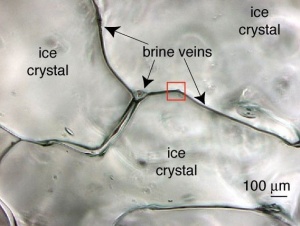
When temperature decreases during winter, the size of brine channels/pockets reduces while the salinity of brine increases and prevents their freezing. During the formation of sea ice, numerous micro-organisms (bacteria, virus, larvae, worms and micro-algae) living in the water column were trapped and started to live in theses brine channels, rich in nutrients.
During spring, when the temperature starts to increase, the brine channels expand. With the increase of temperature, sea ice starts to melt and thereafter the brine pockets and the channels start to be inter-connected through the entire ice core (Figure 2).
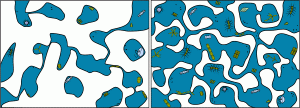
At that time, ice algae are mostly concentrated at the bottom of sea ice to have access to the nutrient in the water column but they can also migrate through the channels in the ice if they need more sunlight (Figure 3).

Meanwhile, larger grazers like copepods and amphipods come to the bottom of sea ice to graze some ice algae but they can also swim through the brine channels to find some food.
During Green Edge ice camp, the scientists measured the salinity and temperature on two complete ice cores every two days. With these parameters, they can estimate the brine volume and determine the periods of brine flushing associated with a decrease of salinity in the entire ice core. As shown on Figure 4, the salinity in the ice core decreased between 13 and 20 May, but mostly after the 13 June. The first decrease of salinity could be associated with a short drainage of brines, while the major decrease of salinity at the surface after 13 June is associated with the complete melt of the snow cover.
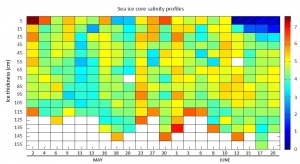
In fact, during the snow melt period, the melted snow penetrates the ice through the channels and flush most of the micro-organisms in the underlying water column. So the complete flushing of sea ice algae seems to be right now on the ice camp of Green Edge! This flushing of snow melt associated with the release of ice algae in the water column could seed the phytoplankton bloom underneath the ice. Should we observe the beginning of the phytoplankton bloom soon?

